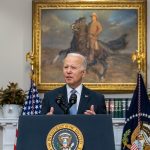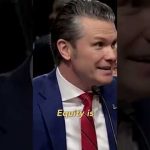California has been gripped by wildfires in recent weeks, a cycle that has become as predictable as the changing seasons. Yet, this year’s fires appear to carry a heavy weight of frustration and concern, particularly in places like Orange County. Much of the national conversation centered on the ongoing crisis revolves around preparedness and the lack of foresight displayed by local governments and emergency services. It is troubling that with each wildfire season, firefighters and emergency agencies are left scrambling while the predictable nature of these disasters begs a serious reassessment of priorities, resources, and, above all, accountability.
Few understand this urgency better than Brian Fennessy, the fire chief of Orange County. With years of experience dating back to 1978, he knows firsthand the challenges posed by the Santa Ana winds that sweep relentlessly through California. These winds follow patterns and forecasts well-known to meteorologists. Yet, the community in and around Los Angeles stood on the precipice of disaster when those winds whipped up fires that threatened not only landscapes but also the very homes of families residing in their paths. One cannot help but wonder how a state so aware of its vulnerabilities manages to find itself repeatedly unprepared for the inevitable.
Fennessy spoke of pre-positioning resources—a program approved and funded for increased readiness. California’s local fire departments can request additional equipment and personnel should conditions warrant it. Yet, even with systems in place, it raises pressing questions. With predictable events looming on the horizon, why aren’t these programs utilized more aggressively? The assessment suggests a problem deeply rooted in funding and decision-making—one that teeters on the edge of incompetence. The stakes are too high, and the repercussions too devastating, to remain mired in bureaucracy.
This disconnect reveals a deeper malaise within public services—the struggle between the need for immediate action and the constraints imposed by funding models that appear out of touch with the realities on the ground. The frustration among firefighters and the communities they protect grows as they are compelled to work with limited resources. As Fennessy noted, some counties could only staff fire stations at a dismal 60% during peak fire season. It is a scenario that feels almost criminal when lives and livelihoods are at stake. To consider that towns with full knowledge of their perilous positions might be left without adequate protection not only stirs anger but invokes an innate sense of moral duty that is being neglected in political discourse.
Yet as we look into the root causes of these widespread issues, we must ponder the philosophical notion of responsibility. What does it mean for a government to serve its people effectively? The recent wildfires serve as a stark reminder of the essential contract between citizens and their leaders. It is incumbent upon government officials to ensure that communities are safe, equipped, and prepared to weather not just physical elements but also human failures in infrastructure and response systems. The job of a leader is to prioritize the safety and well-being of their constituents, a task that cannot be accomplished without the requisite foresight.
As the fires flicker like ghosts in the backdrop of society’s tumult, it is crucial to gather not just as an electorate but as engaged citizens who advocate for a better system of accountability and responsibility from those in power. Uncle Sam ought to be the figure that not only offers assistance with brave firefighters but also actively ensures that adequate resources are deployed to prevent catastrophic fires. Fennessy hinted at stepping into a role at the federal level—a move that might lend insight into remedying systemic problems presented by organizations that have often been sidelined.
In a world where natural disasters continue to evolve in intensity, it is no longer just a conversation about fire preparedness. It branches into the very fabric of community resilience and beckons those in elected office to heed lessons imparted by years of historical events. The seemingly perennial threat of wildfires calls for a strategic united front—a blend of governmental responsibility and community readiness. It is a call to address injustices of neglect and begin forging pathways not just for survival but for a thriving future free from fears of catastrophe. Through this lens, we can foster a promise that comes not merely from preparedness but from a deep-seated commitment to dialogue, unity, and proactive governance that honors histories written in flames and lives forever altered in their wake.




